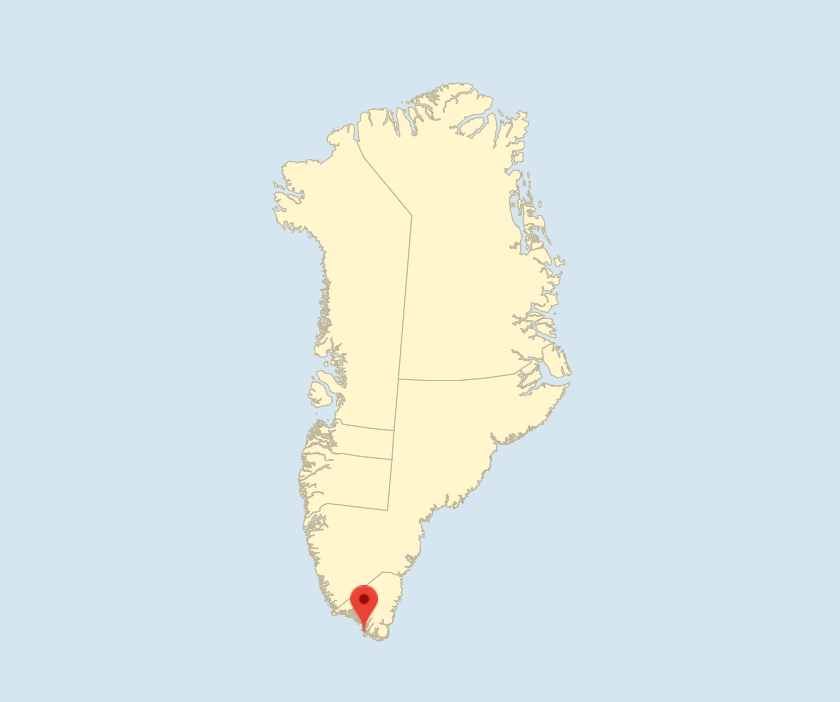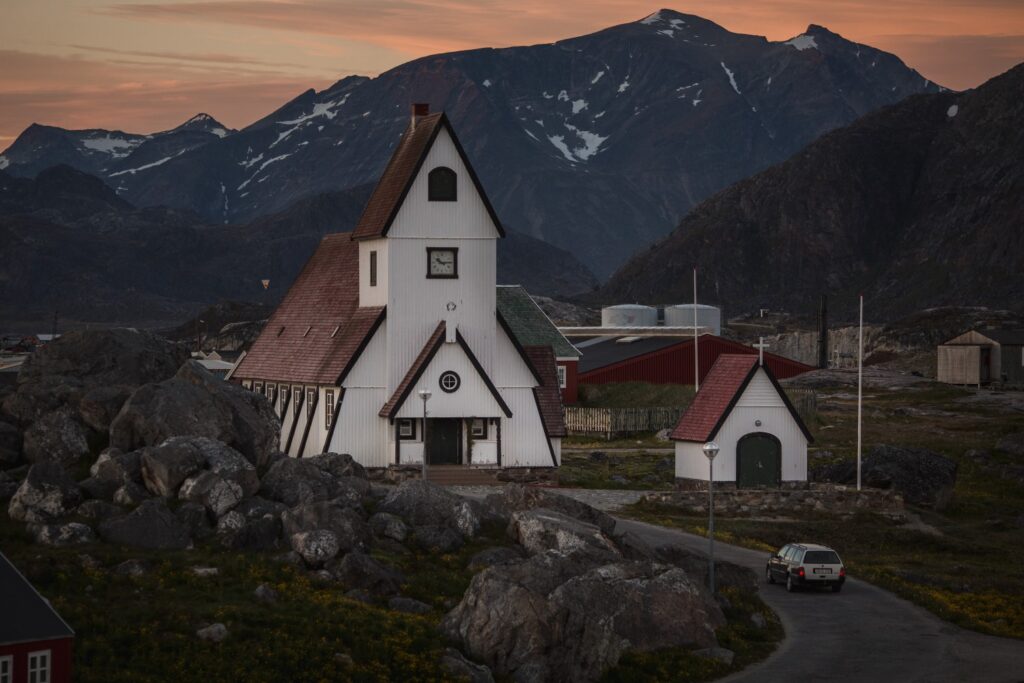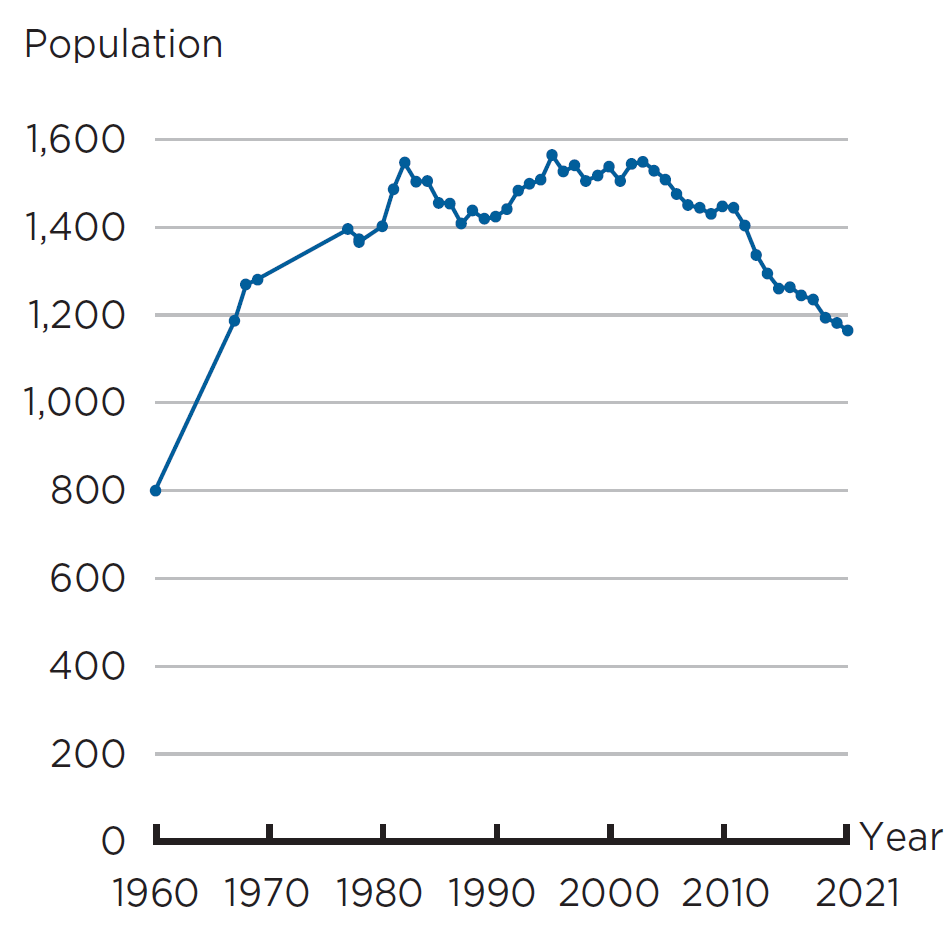

MADS PIHL/VISIT GREENLAND, 2016
Nanortalik is located about 100 km northwest of Uummannarsuaq (Cape Farewell) and is Greenland’s southernmost town. Nanortalik means ‘the place with polar bears’ after the bears that come with the multiyear ice – ‘storis’ (great ice) – down the east coast and around Uummannarsuaq. In the colonial period, Nanortalik was a trading station under the colony of Julianehåb (today: Qaqortoq) and has never had a Danish name. The town has 1,169 inhabitants, with 474 living in the five settlements of the district. The district and especially the southern part are regularly isolated by the storis (great ice) in spring, summer and early autumn.
History of Nanortalik
The storis provides good hunting opportunities and the district has been relatively densely inhabited with many settlements for both Inuit and Norse. In 1797, a trading post was established to increase the trading in Greenlandic products.

GRØNLANDS STATISTIK
Beginning in the late 19th century, the basis of hunting was undermined by the massive seal hunting by Canadians on the banks at Newfoundland and the intensive seal hunting by Norwegians in the storis along the East Coast. It brought about starvation and poverty in the early 1900s, especially in the southernmost part of the district.
To counter it, the Greenland Provincial Council under the Danish state supported a gradual conversion from hunting to cod fishing from the early 1900s, and it gradually lifted the district out of poverty. However, the storis made regular fishing impossible in the southernmost part of the district and brought about a partial relocation to the north, primarily to Nanortalik.
With post-war decolonisation, Nanortalik became an autonomous municipality in 1950, but the problems with the storis meant less investment in trading and infrastructure than in the open-water towns.
Since the collapse of the cod fishery around 1990, Nanortalik and the settlements have been characterised by a lack of business base, unemployment and social problems. The settlement population went to Nanortalik, growing to 1,564 inhabitants in 1995. Since then, the town has been gradually depopulated, a process that accelerated with the municipal amalgamation in 2009, when a number of administrative tasks were moved to Qaqortoq.
Geography and infrastructure of Nanortalik

MADS PIHL/VISIT GREENLAND, 2016
The area around the town is characterised by high, steep mountains and green valleys, while the district further north gradually transitions to lower and ice-scoured mountains. Near some of the district’s settlements, there are sheep farms, and not far from Nanortalik is the country’s only natural forest with several meters high willow and birch, and coniferous forest has also been planted.
Low pressure caused by the encounter between the cold Irminger Current (Polar Current) and the warm Gulf Stream at Uummannarsuaq provides a climate with much rainfall and powerful storms where the average temperature is somewhat lower than in the fjord systems at Qaqortoq and Narsaq.
Situated on a flat peninsula, the town consists of single-family houses, terraced houses and, to a lesser extent, blocks of flats. The water supply network covers virtually the entire town, but the quality of the water from the lake in the town is challenged during certain periods, especially after spring thaw and heavy rain. Central parts of the town have sewer systems, while smaller parts of the town in the south, east and west use toilet buckets and collection of latrines.
The Royal Arctic Line has weekly freight services to the town and Disko Line has weekly passenger services to the settlements and Qaqortoq. Cancellations due to storis (great ice) are common. Air Greenland has helicopter service to Qaqortoq three or four times a week and to Narsarsuaq a few times a week.
There are accommodation options, including Hotel Kap Farvel and a hostel, and the town has a supermarket, some smaller shops and a small hospital. Primary school is the town’s only school. Youth and higher education are taken in other towns.
Trade and industry in Nanortalik
Just under half of those employed work in public administration and services, including education and health, and one-sixth in fisheries and fish processing. The Arctic Prime Fisheries’ plant has up to 15 employees, trading mainly cod, the majority of which come from offshore fishing, and other species such as Greenland halibut, lumpfish, redfish and Atlantic wolffish. The gold mine in Nalunaq (Kirkespirdalen), when in operation, contributes jobs to the town. There are jobs in commerce and a number of smaller industries, such as building and construction. The hotel and restaurant sector had approximately 30 employees in 2019.
There is great potential for tourism in the district with the steep mountains, green valleys, sheep farms, storis (great ice) and icebergs, and a lot of climbing and kayaking tourists are already seen.

ASIAQ, 2022
Further reading
- Agriculture in Greenland
- Industry and labour market
- Infrastructure
- Kommune Kujalleq
- Locations with agriculture and sheep farming
- Narsaq
- Narsarsuaq
- Qaqortoq
- Towns and settlements
Read more about the Municipalities and towns in Greenland
